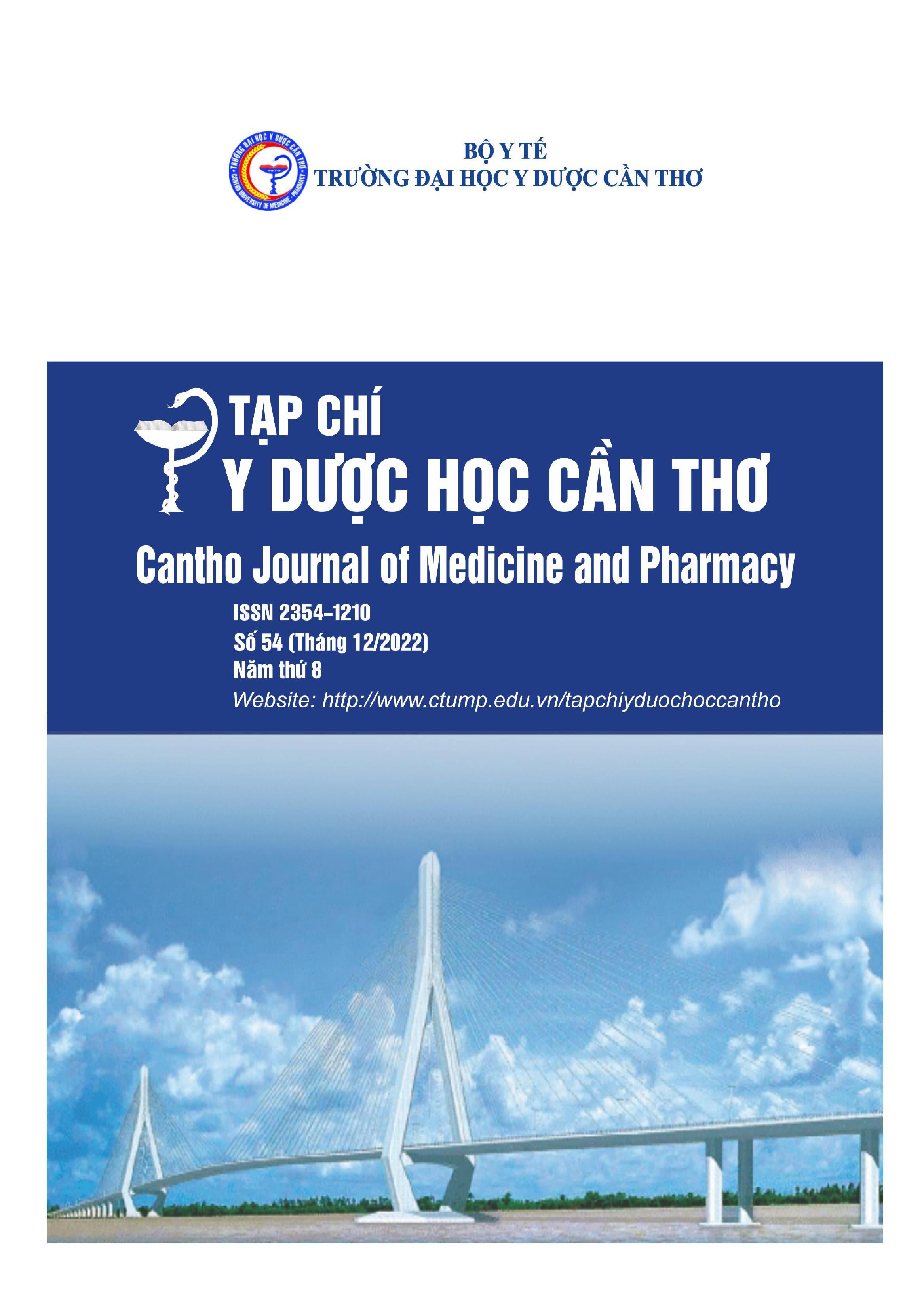PROGNOSIS VALUE OF GLYCEMIE AND WHITE BLOOD CELL IN TRAUMATIC BRAIN INJURY PATIENTS AT EMERGENCY DEPARTMENT OF AN GIANG CENTRAL GENERAL HOSPITAL IN 2021
Main Article Content
Abstract
Background: Identifying significant injury and the prognosis of patients with traumatic brain injury is a challenging mission. We set out to determine if white blood cell (WBC), and Glycemie can be aided clinicians in detecting severe brain injury in trauma victims, and find both WBC and glycemic levels that respectively have the highest sensitivity and specificity. Objective: To investigate patients’ backgrounds and the correlation of glycemic, WBC, and prognosticate outcomes of traumatic brain injury (TBI) patients admitted to the Emergency Department of An Giang Central General Hospital. Materials and method: 166 TBI patients determined all causes were hospitalized in the Emergency Department of An Giang Central General Hospital from January 2021 to June 2021. Research method: a cross-sectional descriptive study. Results: The average age of TBI patients was 46±18 years old, the group of everyday life accidents had the highest average age of 60±15. In the group of traffic accidents, the age from 20 to 59 years old gained the highest rate of 50.6%. There was a positive linear correlation between the Glasgow Coma Scale and glycemic (r=-0.434, p<0.05) and WBC (r=-0.344, p=0.000). The area under the ROC curve was 76% (p=0,000) for glycemic and 71.4% (p=0,000) for WBC. Cut-off concentrations for optimum prediction of severe TBI were higher than 7.55 mmol/L (p<0.00) with sensitivity and specificity values of 82,1% and 60%, respectively. On the other hand, leukocyte cut-off 17.24 cells/mm3 with a sensitivity of 71.4% and specificity of 73.2% in the prognosis of patients with traumatic brain injury. The higher glycemic and WBC has more statistical significance for the mortal group than the survivals (p<0.05). Conclusion: Glycemic levels and leukocyte counts are positively correlated with the severity evaluation and prognosis of TBI.
Article Details
Keywords
Traumatic brain injury, hyperglycemia
References
2. Jia Shi1 et al. (2016), Review: Traumatic brain injury and hyperglycemia, a potentially modifiable risk factor. Oncotarget, tập 7, 71052-71061.
3. Daniel A. Godoy et al. (2016), Glucose control in acute brain njury: does it matter ?. Curr Opin Crit Care, tập 22,120-127.
4. Ali Salim và cộng sự (2009), Positive Serum Ethanol Level and Mortality in Moderate to Severe Traumatic Brain Injury. Arch Surg, tập 144, 865-871.
5. Ali Salim et al. (2009), Persistent hyperglycemia in severe traumatic brain injury: an independent predictor of outcome. Am Surg, tập 75, 1773-1777.
6. Hernando Raphael Alvis-Miranda (2014), Effects of Glycemic Level on Outcome of Patients with Traumatic Brain Injury: A Retrospective Cohort Study. Bull Emerg Trauma, 65-71.
7. Aristedis Rovlia, Serafim Kotsou, 2001. The Blood Leukocyte Count and Its Prognostic Significance in Severe Head Injury. Surg Neurol, tập 55, 190-196.
8. Timofeev I et al. (2011), Cerebral extracellular chemistry and outcome following traumatic brain injury: a microdialysis study of 223 patients. Brain, tập 134, 484-494.
9. Andersen BJ, Marmarou A (1992), Post-traumatic selective stimulation of glycolysis. Brain Res, tập 585, 184-189.


